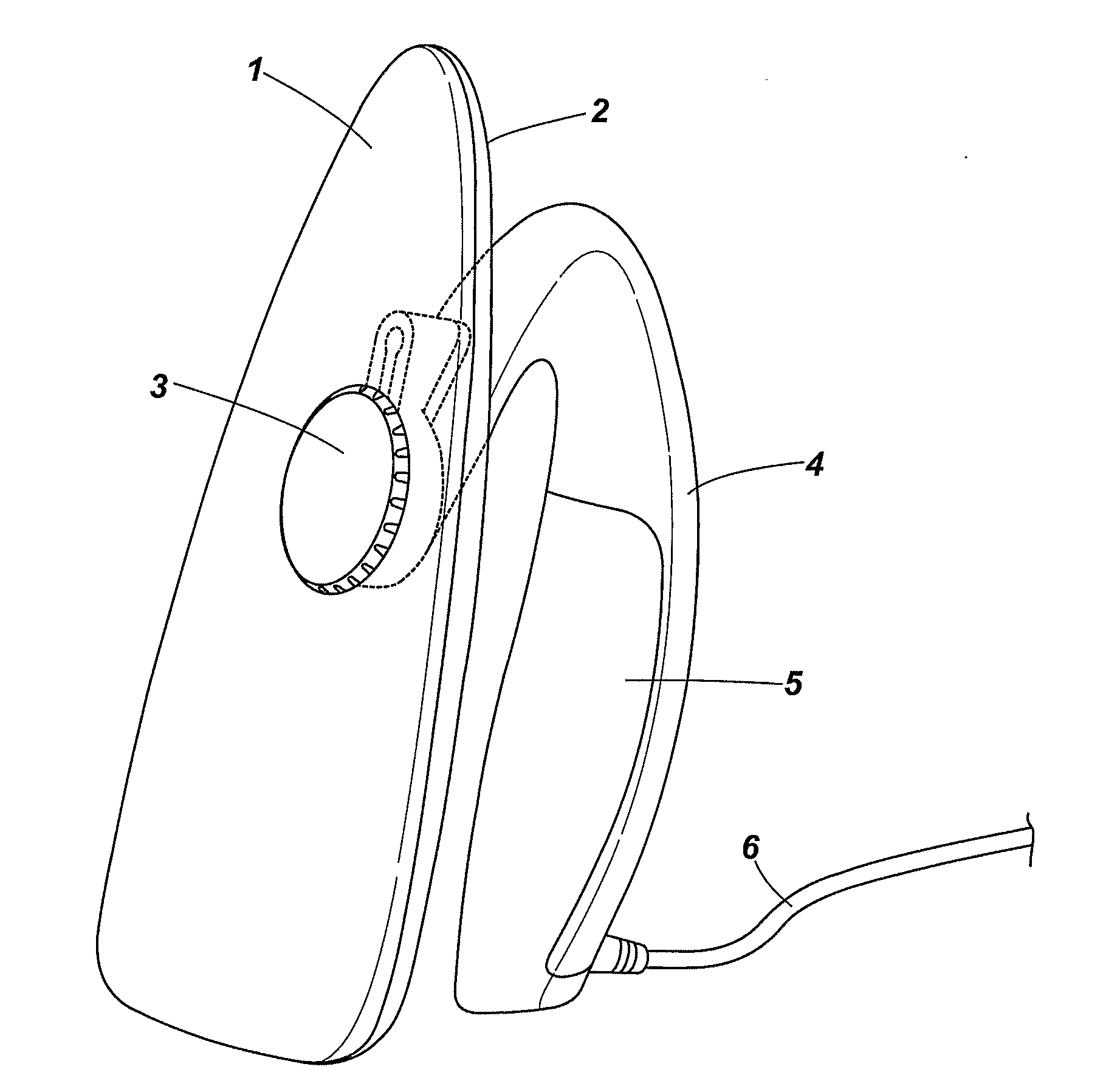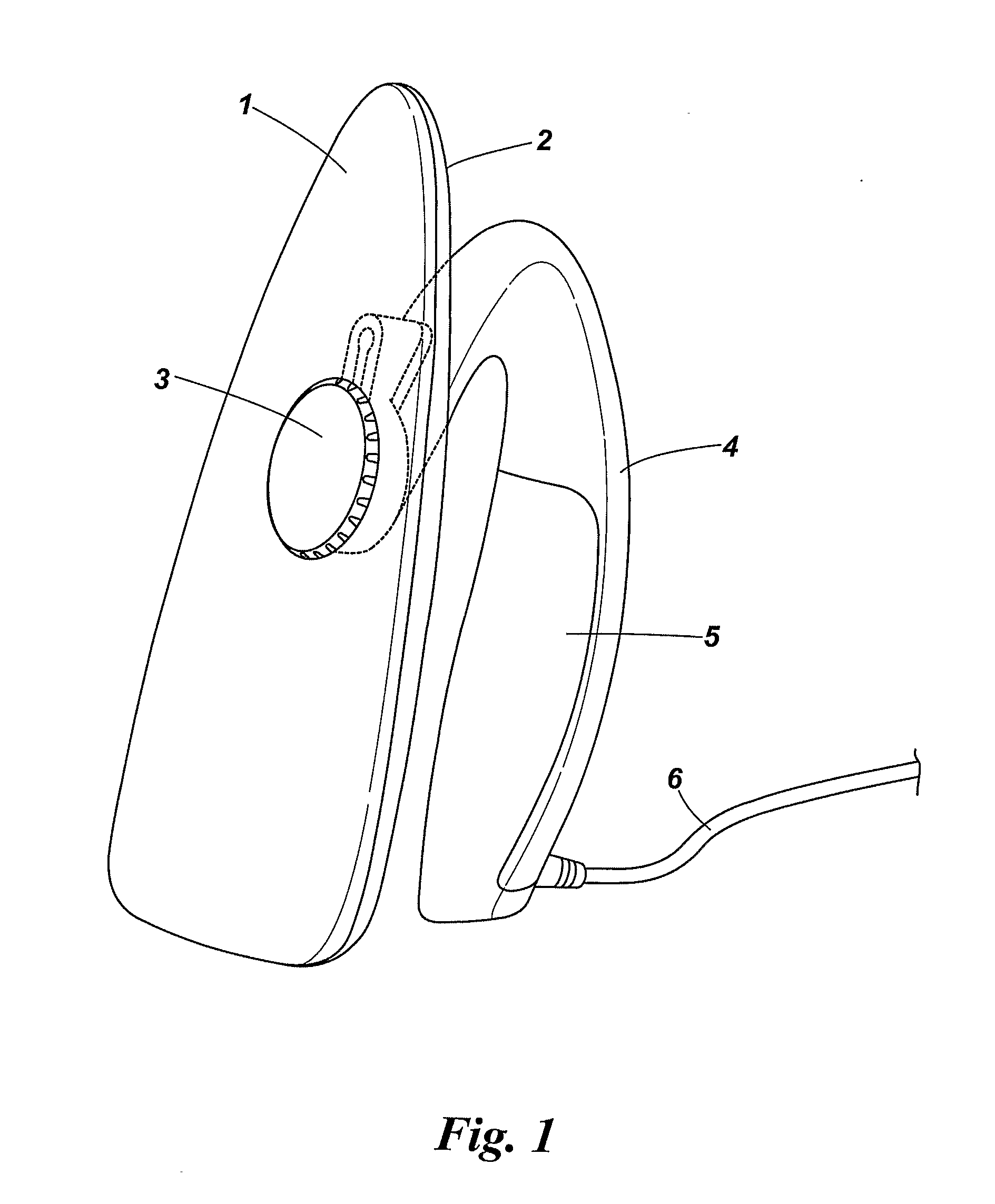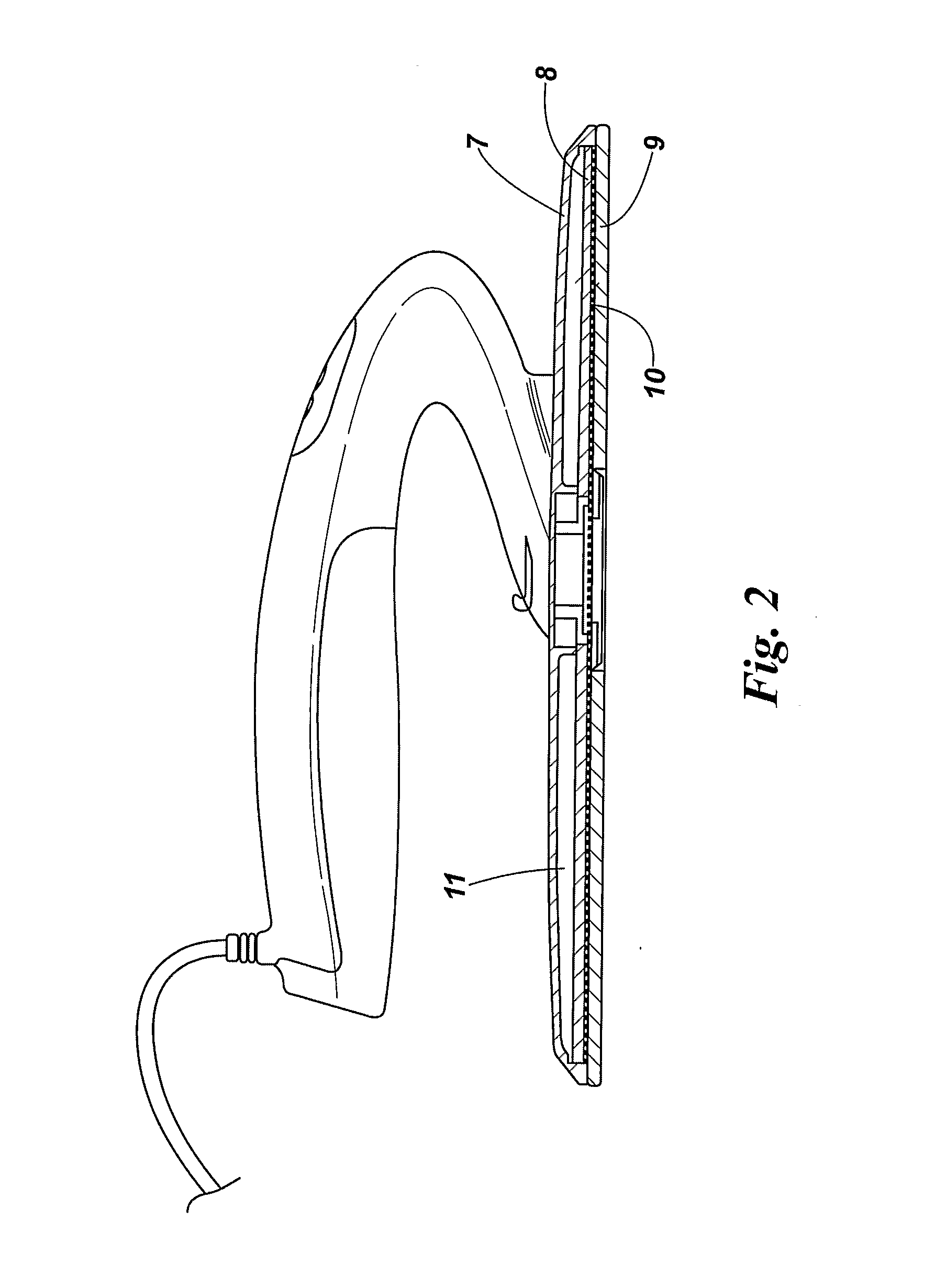Iron
a technology of electric irons and irons, applied in the field of electric irons, can solve the problems of reducing affecting the efficiency of the system, and affecting and achieving the effect of reducing the cost of production and maintenance, and improving the efficiency of the system
- Summary
- Abstract
- Description
- Claims
- Application Information
AI Technical Summary
Benefits of technology
Problems solved by technology
Method used
Image
Examples
Embodiment Construction
[0103]There will now be described by way of example a specific mode contemplated by the inventors. In the following description numerous specific details are set forth in order to provide a thorough understanding. It will be apparent however, to one skilled in the art, that the present invention may be practiced without limitation to these specific details. In other instances, well known methods and structures have not been described in detail so as not to unnecessarily obscure the description.
[0104]In specific embodiments disclosed herein, there is provided an iron having a glass or ceramic sole plate, which is heated directly by a thin film semi-conductor material, for example an antimony tin oxide coating, or an equivalent semi-conductor coating, for example doped indium tin oxide (ITO) or doped fluorine tin oxide (FTO).
[0105]In this specification, where the term antimony tin oxide is used, this encompasses materials including antimony oxide and tin oxide, and including materials...
PUM
| Property | Measurement | Unit |
|---|---|---|
| temperature | aaaaa | aaaaa |
| band gaps | aaaaa | aaaaa |
| width | aaaaa | aaaaa |
Abstract
Description
Claims
Application Information
 Login to View More
Login to View More - R&D
- Intellectual Property
- Life Sciences
- Materials
- Tech Scout
- Unparalleled Data Quality
- Higher Quality Content
- 60% Fewer Hallucinations
Browse by: Latest US Patents, China's latest patents, Technical Efficacy Thesaurus, Application Domain, Technology Topic, Popular Technical Reports.
© 2025 PatSnap. All rights reserved.Legal|Privacy policy|Modern Slavery Act Transparency Statement|Sitemap|About US| Contact US: help@patsnap.com



